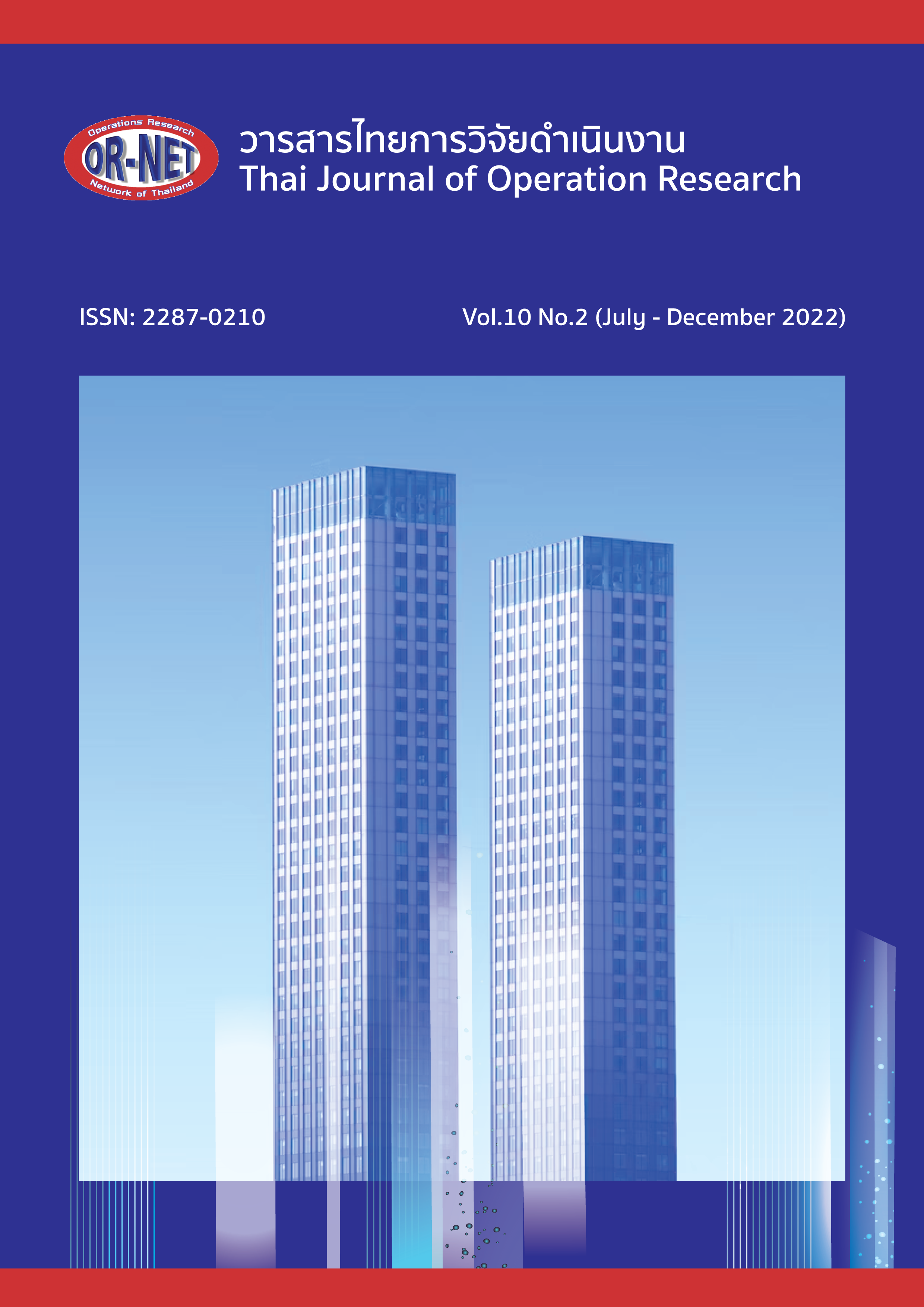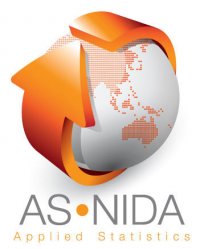Locating Distribution Centers and Planning Effective Routes for Vaccine Distribution for Low Transportation Costs
Keywords:
location for distribution, routing, K-means clustering, center of gravity, genetic algorithmAbstract
This paper is a comparative study of the process between the Center of gravity method and the K-means clustering method. Finding distribution centers and routing of Covid-19 vaccines to have low transportation costs, starting from the study of finding vaccine distribution centers into 2 models. Methods of data analysis using the Center of Gravity and data analysis using K-means Clustering. After that, the transportation route will use a genetic algorithm. The genetic algorithm aims to distribute vaccines cost-effectively with the idea that when transport distances are short, transportation costs are reduced. It will be analyzed and compared to finding a distribution center to be able to find shorter distances in transport, which results from the analysis. Compare both methods. The method of data analysis uses the center of gravity. There are 6 vaccine distribution centers and 25 routes for transporting vaccines with a total distance of 8,250 kilometers. The data was analyzed using the K-means clustering method. There were 6 vaccine distribution centers with 26 routes for transporting vaccines with a total distance of 7,501.5 kilometers. The researcher, therefore, chose the effect of K-means Clustering as a guideline for vaccine transport because it can provide a transport route with a shorter total distance for vaccine delivery than the Center of gravity method.
References
กิริยา กุลกลการ, อนันต์ ภาวสุทธิไพศิฐ และ ศุทธาภา นพวิญญูวงศ์, “ผลกระทบของ COVID-19 ต่อการส่งเสริมการมีงานทำ,” สำนักงานศูนย์วิจัยและให้คำปรึกษาแห่งมหาวิทยาลัยธรรมศาสตร์, มหาวิทยาลัยธรรมศาสตร์, 2553.
กรมควบคุมโรค, “สถานการณ์ผู้ติดเชื้อ COVID-19 ภายในประเทศ,” [ออนไลน์]. แหล่งที่มา: https://ddc.moph.go.th/viralpneumonia/.
[วันที่เข้าถึง 26 เมษายน 2565].
พัชรธิรา ศิริเลี้ยง และ ปารวี จารุพันธ์, “ การเลือกทำเลที่ตั้งเพื่อจัดตั้งศูนย์กระจายสินค้ากรณีศึกษา : บริษัทจัดส่งสินค้าอุปโภคบริโภค,” ปริญญาวิศวกรรมศาสตรบัณฑิต, สาขาวิชาวิศวกรรมโลจิสติกส์, มหาวิทยาลัยเทคโนโลยีพระจอมเกล้าพระนครเหนือ, 2562.
สุชาวดี ปลั่งศรี, “การจัดกลุ่มขนาดผลิตภัณฑ์ โดยการใช้ K-means clustering เพื่อลดต้นทุนบรรจุภัณฑ์,” ปริญญาวิศวกรรมศาสตรมหาบัณฑิต, สาขาวิชาการจัดการงานวิศวกรรม, มหาวิทยาลัยศิลปากร, 2562.
ไพจิตร อุปถัมภ์, “การศึกษาเส้นทางที่เหมาะสมในการจัดเก็บขยะ : กรณี ศึกษาองค์การบริหารส่วนตำบลท่าศาลา อำเภอมัญจาคีรีจังหวัดขอนแก่น,” ปริญญาวิศวกรรมศาสตร์มหาบัณฑิต, สาขาวิชาวิศวกรรมโยธา, มหาวิทยาลัยเทคโนโลยีสุรนารี, 2556.
กรมควบคุมโรค, “แนวทางการให้วัคซีนโควิด 19 ในสถานการณ์การระบาด ปี 2564 ของประเทศไทย ฉบับปรับปรุง ครั้งที่ 1,” [ออนไลน์]. แหล่งที่มา: https://ddc.moph.go.th/vaccine-covid19/getFiles/11/1628849610213.pdf. [วันที่เข้าถึง 26 เมษายน 2565].
อุไรวรรณ คำภูแสน และ รัฐพล สังคะสุข, “การจัดการเส้นทางการกระจายวัคซีนไปยังโรงพยาบาลส่งเสริมสุขภาพตำบล กรณีศึกษาอำเภอวังโป่ง จังหวัดเพชรบูรณ์,” ปริญญาวิทยาศาสตรบัณฑิต, สาขาวิชาเทคโนโลยีอุตสาหกรรมการผลิต, มหาวิทยาลัยราชภัฏพระนคร กรุงเทพมหานคร, 2560.
บริษัท แอสตร้า เซนเนก้า (ประเทศไทย) จํากัด, “วัคซีนโควิด-19 แอสตร้าเซนเนกา (covid-19 vaccine astrazeneca),” [ออนไลน์]. แหล่งที่มา: https://www.azcovid-19.com/content/dam/azcovid/pdf/thailand/th-hcp-injection-manual-azd1222.pdf. [วันที่เข้าถึง 11 สิงหาคม 2564].
Downloads
Published
How to Cite
Issue
Section
License

This work is licensed under a Creative Commons Attribution-NonCommercial-NoDerivatives 4.0 International License.




